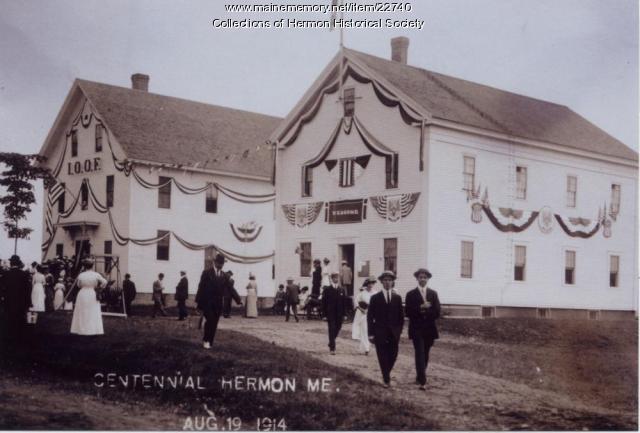Keywords: Building of Arts
Item 18965
Building of Arts, Bar Harbor, ca. 1930
Contributed by: Jesup Memorial Library Date: circa 1920 Location: Bar Harbor Media: Postcard
Item 18964
Building of Arts, Bar Harbor, ca. 1910
Contributed by: Jesup Memorial Library Date: circa 1910 Location: Bar Harbor Media: Postcard
Item 76259
95-107 Spring Street, Portland, 1924
Owner in 1924: Portland Society of Art Style: Federal Use: Art Museum
Item 76260
95-107 Spring Street, Portland, 1924
Owner in 1924: Portland Society of Art Style: Greek Revival Use: Art School
Item 109815
Block for Norway Building Association, Norway, 1881
Contributed by: Maine Historical Society Date: 1881 Location: Norway Client: Norway Building Association Architect: George M. Coombs
Item 111558
Tides Institute and Museum of Art section, Eastport, 2015-2016
Contributed by: Maine Historical Society Date: 2015–2016 Location: Eastport; Eastport Client: Tides Institute and Museum of Art Architect: Carol A. Wilson; Carol A. Wilson, Architect
Exhibit
Art of the People: Folk Art in Maine
For many different reasons people saved and carefully preserved the objects in this exhibit. Eventually, along with the memories they hold, the objects were passed to the Maine Historical Society. Object and memory, serve as a powerful way to explore history and to connect to the lives of people in the past.
Exhibit
Drawing Together: Art of the Longfellows
Henry Wadsworth Longfellow is best know as a poet, but he also was accomplished in drawing and music. He shared his love of drawing with most of his siblings. They all shared the frequent activity of drawing and painting with their children. The extended family included many professional as well as amateur artists, and several architects.
Site Page
"… Historical Society An image of another folk art portrait survives in the daguerreotype of a painting of Eliphaz Chapman of Gilead."
Site Page
Guilford, Maine - BUILDINGS - Page 4 of 5
"… from the community, under the direction of art teacher Mary Lightbody, drew and water-colored images of the old building."
Story
Scientist Turned Artist Making Art Out of Trash
by Ian Trask
Bowdoin College alum returns to midcoast Maine to make environmentally conscious artwork
Story
Sister Therese Bouthot:Life of service as a Good Shepherd sister
by Biddeford Cultural & Heritage Center
From humble beginnings to playing a leadership role in the service of others
Lesson Plan
Longfellow Studies: The Writer's Hour - "Footprints on the Sands of Time"
Grade Level: 3-5
Content Area: English Language Arts, Social Studies
These lessons will introduce the world-famous American writer and a selection of his work with a compelling historical fiction theme. Students take up the quest: Who was HWL and did his poetry leave footprints on the sands of time? They will "tour" his Cambridge home through young eyes, listen, and discuss poems from a writers viewpoint, and create their own poems inspired by Longfellow's works. The interdisciplinary approach utilizes critical thinking skills, living history, technology integration, maps, photos, books, and peer collaboration.
The mission is to get students keenly interested in what makes a great writer by using Longfellow as a historic role model. The lessons are designed for students at varying reading levels. Slow learners engage in living history with Alices fascinating search through the historic Craigie house, while gifted and talented students may dramatize the virtual tour as a monologue. Constant discovery and exciting presentations keep the magic in lessons. Remember that, "the youthful mind must be interested in order to be instructed." Students will build strong writing skills encouraging them to leave their own "footprints on the sands of time."
Lesson Plan
Building Community/Community Buildings
Grade Level: 6-8
Content Area: Social Studies
Where do people gather? What defines a community? What buildings allow people to congregate to celebrate, learn, debate, vote, and take part in all manner of community activities? Students will evaluate images and primary documents from throughout Maine’s history, and look at some of Maine’s earliest gathering spaces and organizations, and how many communities established themselves around certain types of buildings. Students will make connections between the community buildings of the past and the ways we express identity and create communities today.






















